|
By Danielle, Executive Director The recipient of the 2013 Dr. Emory Kemp Lifetime Achievement Award is Jon Smith, a preservationist, master craftsman, and educator – a man who knows how to get things done and has the skills to do it himself. Over the span of 45 years as a master craftsman, he has been directly involved in the hands-on preservation and saving of countless historic sites in West Virginia. And, as an educator, he has ensured that the preservation ethos grows and that preservation skills are passed on to future generations. Jon Smith started his education in Marshall County schools. As a young man, he learned teamwork and discipline as a member of the United States Coast Guard. Jon’s career as a preservationist began during an apprenticeship with Bob Weir – a master carpenter, restoration guru, and a preservationist before the word even started being used. Over the years, Jon worked at various locales, and he started at Allegheny Restoration after being referred by one of his heroes, Paul Marshall, who is also known for his contributions to statewide historic preservation as well as extensive research and writing in state history. Jon’s time with Allegheny Restoration has been a benefit to us all as he has worked with the company on some of West Virginia’s most historic places. When PAWV asked Jon about his favorite jobs, he said it was tough to whittle it down after 40 years, but he did tell me about a few. Graceland is located on Davis & Elkins College campus. It was the summer home of Henry Gassaway Davis. On this unique project Jon assembled a crew, including future Allegheny Restoration supervisor Tom Shaffer. Working under the direction of Paul Marshall, Jon and the crew rebuilt the grand porches. The Martinsburg Train Station was another favorite. Allegheny Restoration received an American Institute of Architects award for craftsmanship of the porches. This project was also Jon’s first job working with Tom Anderson. Not only did Tom pitch in with a hammer he went on to build the company that is the pride of Jon’s career. Together, they went on to restore the Oakland Maryland B&O station, “another AIA award,” Eight covered bridges – mostly with the assistance of Dr. Emory Kemp’s drawings – The West Virginia state Capitol, including the main building, the East wing, West wing, Holly Grove, and the Executive Mansion Windows. But two of Jon’s absolute favorites are the water tank at Cass, and the Tower at Droop Mountain. Both jobs were done with a skeleton crew of craftsmen and apprentice. In the case of Droop, it was just Jon and his apprentice starting with a pile of logs, to re-construct that iconic tower. Utilizing century-old techniques, every cut of those logs was made by hand. It was the student and the teacher, covered in sawdust, standing atop one of West Virginia’s majestic mountains. Droop Mountain was a job that dreams are made of, and Jon says he was living it in the daytime.
Jon’s most Humbling job is as an Instructor at Belmont Community Technical College. For the last ten years, Jon has been sharing “tales of the old superintendent” with students from around the world, and he has impacted countless lives. Jon is known all over the country for his skills and work, and it was our honor to recognize Jon for these accomplishments and present him with the 2013 Dr. Emory Kemp Lifetime Achievement Award. By Danielle, Executive Director Historic downtowns are making a comeback and proving to be centers of growth and hubs for business development, the arts, and social activities. The people at Main Street Morgantown realized the potential of downtown revitalization decades ago, and that is why we are honored them with the Downtown Preservation Award. Main Street Morgantown is a nonprofit organization founded in 1984. It is dedicated to the continued revitalization of downtown Morgantown and the Historic Wharf District. Since 1984, Main Street Morgantown has been involved in the creation of 1300 new jobs, the opening of more than 200 new businesses, and over $126 million dollars in investments. It is a grassroots organization working primarily in the areas of historic preservation and economic development, and it has received numerous local, state, and national awards, including the Great American Main Street Award in 1998. Main Street Morgantown has worked on many historic preservation projects over the years. Tonight, we will highlight some of its proudest achievements. The Main Street Morgantown Audio Walking Tour was created in collaboration with the Walkabout Company. It is a two-hour audio walking tour with 51 stops, and it can be travelled with the use of MP3 players available at our current venue, the Hotel Morgan. It also includes a 28 page guidebook which explains architectural styles and terms referring to the historical and political period in which the buildings were built.
Main Street Morgantown has also been involved in the preservation and adaptive re-use of historic buildings in downtown Morgantown. The W.E. Price House located at 270 Walnut Street is a Romanesque Gothic Style structure. As a downtown economic development organization, Main Street Morgantown helped to move the Appalachian Gallery into this building. The Metropolitan Theatre at 371 High Street is one of the greatest achievements for Morgantown’s downtown revitalization. With the help of Main Street Morgantown, the theatre has been restored and is a hot spot for nightlife and an economic engine for downtown growth. The driving forces behind Main Street Morgantown are its two key staff members: Barbara Watkins and Terri Cutright. Barbara Watkins started with Main Street Morgantown in 2002 as the Administrative Assistant. She was promoted to the Assistant Director of Main Street Morgantown in April 2009. During this time Barbara has helped Main Street Morgantown triple its event attendance for Chocolate Lovers’ Day, Kids’ Day and Arts Walk. She has helped create two new events: Art is Food and Small Business Saturday. Terri Cutright has been Executive Director of Main Street Morgantown since April, 1990. Under her leadership, Morgantown was the winner of the Great American Main Street Award in 1998, and was selected as one of the National Trust for Historic Preservation’s Dozen Distinctive Destination in 2007. Since 1991, Morgantown is the most decorated Main Street program in West Virginia with over 75 individual, committee, and project awards. Under Terri’s direction, the Morgantown Main Street District has had over $75 million dollars of reinvestments, 216 new businesses open, and 1,500 new jobs created.
I have experience developing exhibits, surveying historic resources, conducting oral history interviews, editing sound and video, managing Facebook pages, creating web content, and planning events (from summer camps to open houses). When I’m not sharing my love of history with the public, you can find me hanging out with my boyfriend Kenny, whippin’ up some vegetarian magic in the kitchen, hiking in the wild and wonderful, or biking along the Mon River Rail Trail.
My big goals at Old Hemlock are to place the house in the National Register of Historic Places and to start an oral history program, thereby further preserving the legacy of George and Kay. I’ll be keeping a blog about my year at Old Hemlock, so make sure to check in! Read Eliza’s blog HERE! This service initiative is administered by the Preservation Alliance of West Virginia, the statewide grassroots nonprofit dedicated to the support and promotion of historic preservation in the Mountain State. The PreserveWV AmeriCorps members develop and participate in a variety of community projects related to historic resource improvement, historic preservation, heritage tourism development, and nonprofit organizational capacity building. For more information, visit www.pawv.org. PreserveWV AmeriCorps is funded in part by Volunteer West Virginia, the state’s Commission for National and Community Service, and by the Commission for National and Community Service. By Danielle, Executive Director The Historic Rehabilitation Tax Credit is a valuable tool for large-scale historic preservation projects. Preservationists all over the country recognize the need for this tax incentive because without it, many of the larger projects could not come to fruition. It just wouldn’t be economically feasible. The federal Historic Rehabilitation Tax Credit is under fire currently as Congress undertakes tax reform, and we’ve been advocating all year for the importance of renewing this tax credit. Rather than discussing politics though, we want to recognize a grand project in Elkins that brought several organizations together in a fantastic partnership to save First Ward School and bring it back to life by adapting it into senior housing. In 2009, Preservation Alliance of West Virginia added the First Ward School to its WV Endangered Properties List because of its deterioration. That same year, Citizens for Historical Opportunity, Preservation, and Education, or C-HOPE, purchased the historical building for $1 from the Randolph County Board of Education. C-HOPE’s ultimate goal was to re-use the prominent structure for contemporary needs. After listing it to the National Register of Historic Places and fixing the roof, C-HOPE sold the school to AU Associates and Highland Community Builders. Under this partnership, the two transformed the building into sixteen affordable senior housing apartments for those fifty-five and older. AU Associates is a development firm based in Lexington, Kentucky, and it develops properties based on the principals of adaptive use, and has focused on opportunities for urban infill, as well as the revitalization of existing structures. Highland Community Builders is a nonprofit organization whose mission is to improve the quality of life of residents of north-central West Virginia by developing quality housing that is affordable, and by collaborating with other agencies to provide opportunities for self-sufficiency, job training and asset building. It is affiliated with the Randolph County Housing Authority, a non-traditional housing authority whose mission is to “promote strong communities and a healthy quality of life.” Highland Community Builders worked with C-Hope to attract AU Associates to the project, and facilitated community meetings about the project as the feasibility work was being carried out.
The Total Project Cost was $3,737,000 with Sources of Funds including, Low Income Housing Tax credits of $3.3 million resulting in $2.8 million in equity; Federal Historic Tax Credits of $675,294 resulting in $594,200 in equity; State Historic Tax Credits of $337,647 resulting in $209,400 in equity; and a Development Grant from the WV State Historic Preservation Office of $59,700. The combination of the Low Income, Federal and State Historic Credits is what made this possible; it could not have been done without all three! The recipients for this year’s Best Use of Historic Preservation Tax Credits Awards: AU Associates, C-HOPE, Highland Community Builders, and the Randolph County Board of Education. Is there an old building in your town that is dilapidated, but you think it would be a perfect fixer-upper? Do you volunteer with a historic organization that has been working to save an abandoned historic building and are in need of help? Could you use some support in finding a new use for a community eye sore? You fit one of the first criteria in working with an endangered property, and there are a lot of opportunities for these old properties outside of demolition.
Historic buildings can be endangered from neglect, deferred maintenance, proposed demolition, lack of resources, and environmental factors such as severe storms. In West Virginia, your statewide historic preservation nonprofit, Preservation Alliance of West Virginia (PAWV), has developed an Endangered Properties List to address these issues and highlight at-risk historic resources. When properties are listed and identified as endangered, property stewards receive specialized technical assistance and guidance to tackle problems related to their property’s endangerment. Over the past five years, PAWV has assisted organizations and individuals in saving and re-using over forty historic properties. To be added to the Endangered Properties List, properties must be listed in or eligible for listing in the National Register of Historic Preservation and demonstrate a certain degree of endangerment. Additionally, stewards must have a re-use plan and local support for the property’s re-use. Properties can include historic buildings, archaeological sites, landscapes, bridges, structures, and more. The Endangered List is based on nominations submitted on an annual basis and are selected by a committee comprised of members of the PAWV Board of Directors and staff. Nominations are currently being accepted and are due on November 15. Nomination forms are located at http://pawv.org/endangernom.htm. For questions, contact [email protected] or call 304-345-6005. The popularity of Historic preservation continues to grow in West Virginia. Not only do we have dedicated preservationists to thank for this development, but we recognize the positive influence the media has in celebrating historic preservation and in bringing tourists to historical sites.
This year, our award recipient is notable for her dedication to the ongoing conservation and the dissemination of West Virginia’s culture, as well as the promotion of West Virginia’s heritage tourism sites and businesses through multiple magazine publications. Nikki Bowman is a West Virginia native and the founder and owner of New South Media, Inc., which publishes the critically acclaimed WV LIVING, WV WEDDINGS, and MORGANTOWN magazines. She graduated from West Virginia University and received her master’s degree in Writing from DePaul University in Chicago. Nikki is a member of countless professional and community organizations and travels the state promoting West Virginia events and historical sites. We recognized Nikki’s heritage tourism efforts through WV LIVING magazine. It is the state’s leading regional publication. It celebrates modern day life in West Virginia and showcases the best the state has to offer with positive stories about our small towns, heritage tourism sites, special events, charming shops, cutting-edge restaurants, and talented craftsmen. Nikki’s publications single-handedly reach more potential tourists with heritage tourism articles than any other West Virginia magazine and has recently featured stories about Helvetia, the lantern tour in Historic Beverly, the Historic railroad town of Hinton, and the Elkhorn Inn and Theatre. WV LIVING has a readership of 80,000 and is sold in more than 24 states and in Canada. It is this readership that is boosting our heritage tourism economy in the state. Check out the WV LIVING website at http://www.wvliving.com/ The PreserveWV AmeriCorps program is bringing eleven individuals from all over the country to serve historical and economic development organizations in their historic preservation projects. The purpose of the PreserveWV AmeriCorps program is to promote historic preservation and heritage tourism in West Virginia through historic resource re-use, improvement, and development. Particular focus will be placed on non-profit capacity building through organizational policy development, volunteer management, and community engagement. AmeriCorps members’ service will contribute to West Virginia’s economic development and environmental stewardship through historic resource improvement and capacity building. Members applied with the Preservation Alliance of West Virginia, and after a competitive application process, were selected and placed for one year of service at the following sites: Adaland Mansion in Philippi, the Cockayne Farmstead in Glen Dale, the Craik-Patton House in Charleston, Main Street Fairmont, Main Street Morgantown, the Marion County Historical Society, Preservation Alliance of West Virginia, and the Wheeling National Heritage Area Corporation. Members received training last week and officially begin service at their sites on Monday, October 7. Members will be meeting community residents throughout their year of service and engaging them to take part in extant and new community events. They also will be meeting and working with community residents to help with economic development and historic resource re-use projects. One of their goals is to involve local residents in these projects in order to meet community needs and promote local ideas. Contact [email protected] for information about the service sites, projects, and ways to get involved with these projects. All are encouraged to participate.
This service initiative is administered by the Preservation Alliance of West Virginia, the statewide grassroots nonprofit dedicated to the support and promotion of historic preservation in the Mountain State. The PreserveWV AmeriCorps members develop and participate in a variety of community projects related to historic resource improvement, historic preservation, heritage tourism development, and nonprofit organizational capacity building. For more information, visit www.pawv.org. PreserveWV AmeriCorps is funded in part by Volunteer West Virginia, the state’s Commission for National and Community Service, and by the Commission for National and Community Service. The Northern WV Brownfields Assistance Center has released a Request for Proposals for the upcoming 2014 Brownfields, Abandoned, Dilapidated (BAD) Buildings Program. Click here to download a copy of the RFP.
The BAD Buildings Program, which is funded through a grant from the Claude Worthington Benedum Foundation, is a statewide initiative which provides technical assistance and site analysis tools to develop and enhance abandoned/dilapidated buildings programs in West Virginia communities. The program also addresses barriers to identifying, prioritizing, and redeveloping BAD buildings. Click here to download a copy of the BAD Buildings Model Program Guide. The BAD Buildings Model and tools support WV communities with limited local capacity and no abandoned/dilapidated buildings program. The model is based on the NBAC’s effective approach to brownfield redevelopment throughout the state. While not all abandoned/dilapidated buildings are brownfields, all brownfields can be viewed as abandoned/dilapidated buildings. The same challenges and opportunities surrounding a brownfield project are commonly encountered when addressing BAD Buildings. WHO SHOULD APPLY? Eligible applicants include the following:
Communities which have an existing abandoned/dilapidated buildings program are encouraged to apply. The BAD Buildings Program is designed to offer technical support to communities at varying stages of local redevelopment and with differing levels of local capacity. HOW TO APPLY Begin your application process by downloading the Request For Proposals and the Program Guide. Completed applications may be submitted on or before Tuesday, January 7th, 2014 by U.S. Postal Service, commercial delivery service, or electronically. ELECTRONIC SUBMISSIONS
HARD COPY SUBMISSIONS
BAD Buildings Program Attn: Luke Elser Northern WV Brownfields Assistance Center 385 Evansdale Drive, Suite 201 (for commercial delivery service) PO Box 6064 (for U.S. Postal Service) Morgantown, WV 26506-6064 October 3, 2013 · by preservationallliancewv · in Historic Architecture, Miscellaneous. ·Citizens and merchants of Historic Harpers Ferry, whose national park lays claim to historic 18th and 19th century events, including John Brown’s raids, are working together to keep the park open.
According to Gary DuBrueler, President of the Harpers Ferry Merchant Association, merchants and other locals are coalescing so visitors can have the memorable experience they expect and deserve. “They will also give information normally provided by Park Service employees,” DuBrueler says.“Our merchants will inform visitors of historic sites, walks for families, and places to eat…If they don’t have answers to visitors’ questions, they’ll leverage their networks and try to find someone who does.” In addition, locals have solutions to the following challenges: Closed: Federal parking lots and shuttle buses parking lots closed due to the shutdown, identifying and negotiating for spaces within walking distance of the historic district. Open: Parking is still available at lots in Historic Harpers Ferry and West Virginia’s nearby visitor center as well as additional spaces locals have identified or negotiated to use – the majority within walking distance from the historic section of town. Closed: Federally funded trails. Open: Yes, trails large and small are open! Locals will gladly point them out, including those on the Appalachian trail and C&O path. Further, according to Executive Director/CEO Ron Tipton, the Appalachian Trail Conservancy Visitor Center in Harpers Ferry remains open and will give visitors advice as to the many trails available to hikers. “Much of the Appalachian trail is state funded,” he says, “and open.” Closed: Public bathrooms. Open: Portable toilets will be available to visitors thanks to a collaborative effort on the part of the Town of Harpers Ferry, the Harpers Ferry Merchants Association, and the Harpers Ferry Historical Town Foundation. Closed: Museum exhibits. Open: Since many of the sites are outdoors, visitors can still explore them and the West Virginia visitors’ center is open with maps and advice. To complete the experience, merchants offer the chance for visitors to experience a wax museum depicting John Brown’s raid, ghost and historic foot tours from a local historian, a hands-on art center where visitors can create take-home memories, a Steampunk art gallery, and the nation’s only historic confectionary shop, carrying 18th and 19th century products, with free talks about each one. To make the trip additionally memorable, some merchants are offering discounts and special deals on products, food and activities, many with local or historic themes. Harpers Ferry lies on the confluence of the Shenandoah and Potomac Rivers and one of the stops along the Appalachian Trail. Known for its beauty and historic relevance, it was visited by Thomas Jefferson, was the site of John Brown’s raid, and played a pronounced part in the Civil War. A short drive from Baltimore, D.C. and other hubs, it welcomes visitors from all over the world. |
News and NotesCategories
All
Archives
May 2024
Subscribe to our mailing list to receive e-news updates on historic preservation news and events in West Virginia.
|
Get Involved |
Programs |
Contact UsPreservation Alliance of West Virginia
421 Davis Avenue, #4 | Elkins, WV 26241 Email: [email protected] Phone: 304-345-6005 |
Organizational Partners:
© COPYRIGHT 2022 - PRESERVATION ALLIANCE OF WEST VIRGINIA. ALL RIGHTS RESERVED.

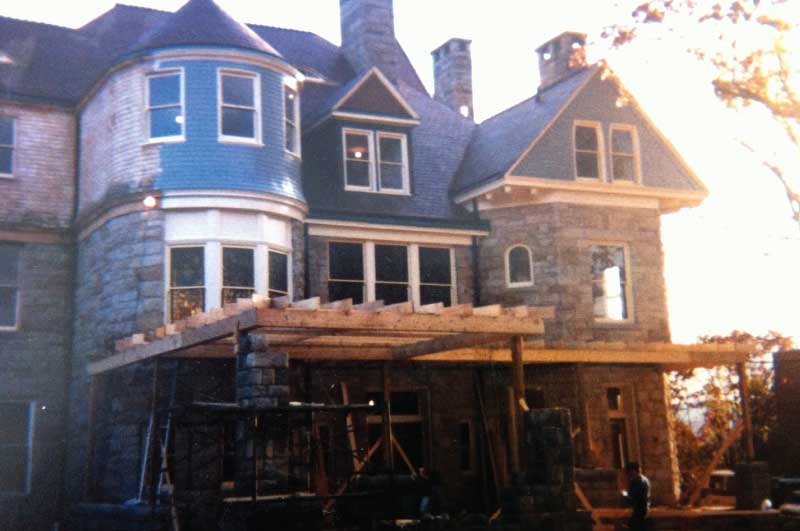

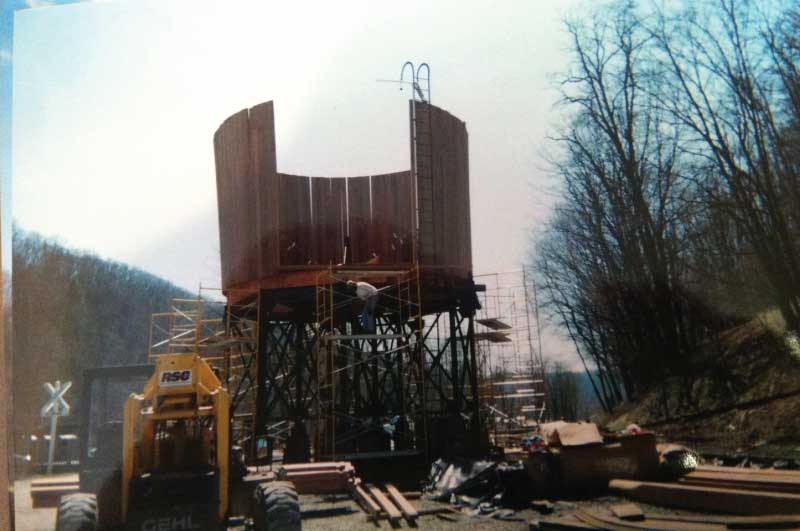
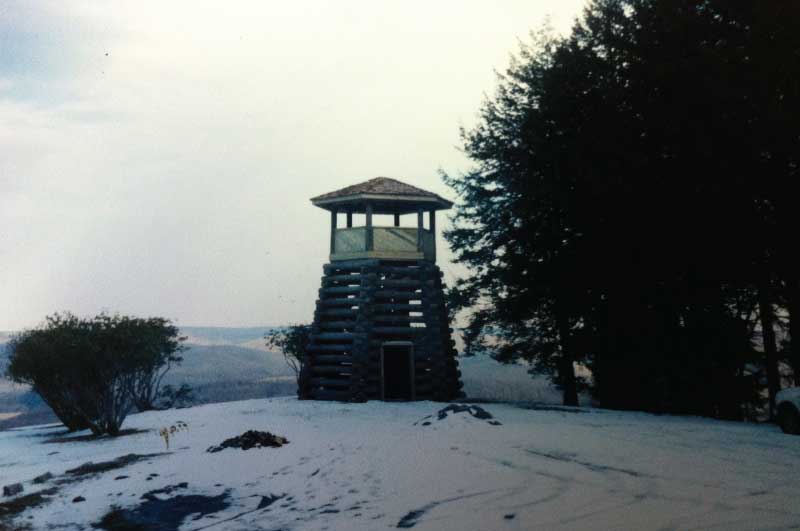





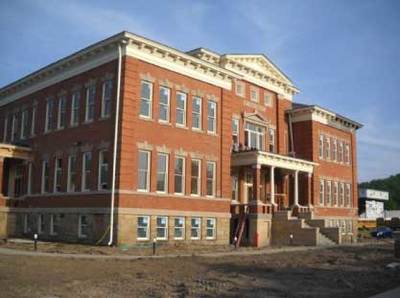
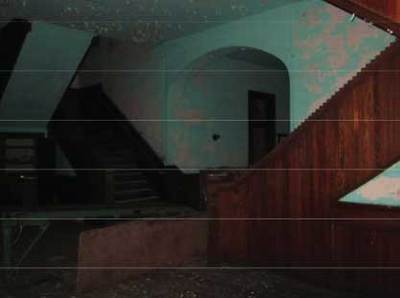


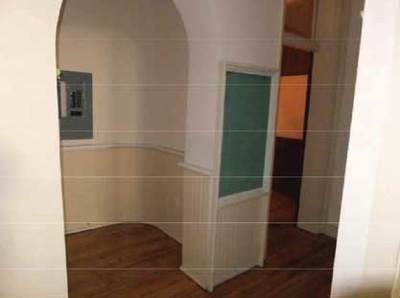

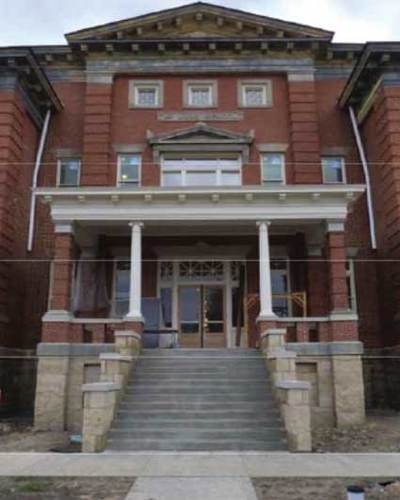



 RSS Feed
RSS Feed



